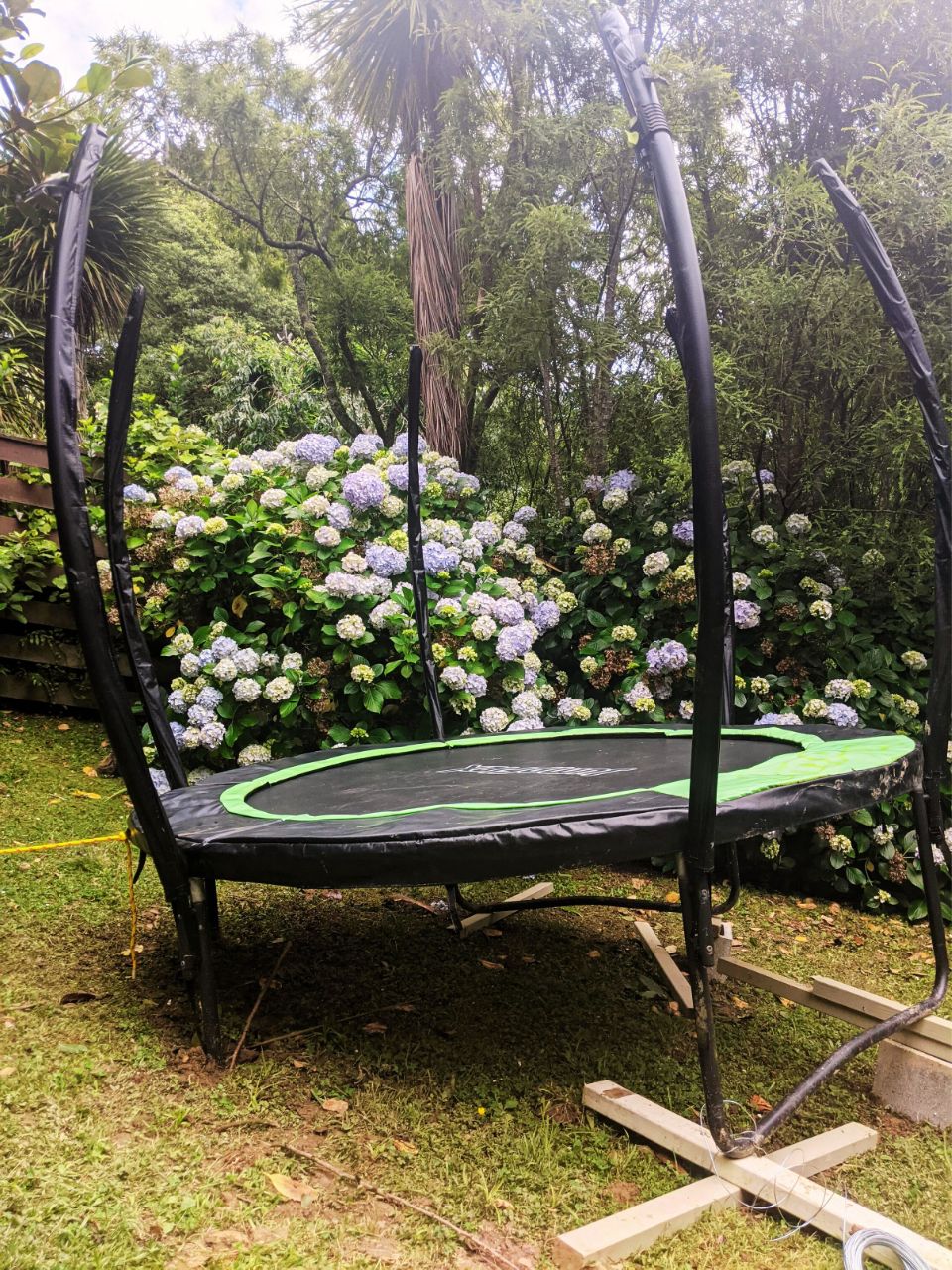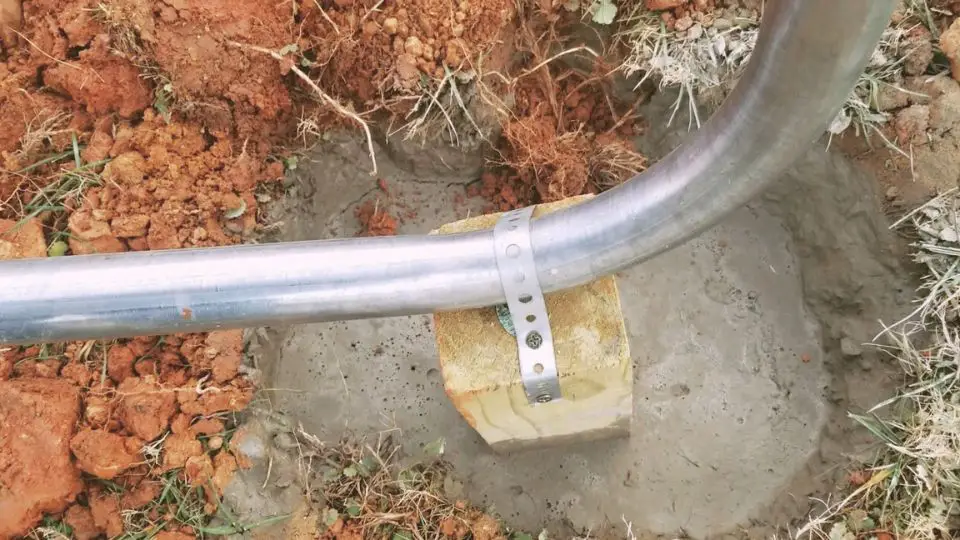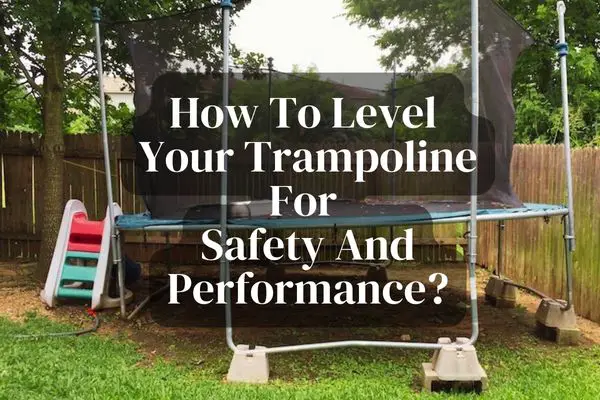Trampolines offer boundless fun and exhilaration for people of all ages. Whether you use it for recreation, fitness, or even professional training, a well-maintained trampoline can provide endless hours of enjoyment. However, one often overlooked aspect of trampoline safety and performance is ensuring that it is properly leveled.
Leveling your trampoline is essential for creating a safe and stable jumping surface. A level trampoline not only reduces the risk of accidents and injuries but also enhances its overall performance, allowing for better control and improved bouncing experiences.
In this comprehensive guide, we will explore the importance of leveling your trampoline and provide you with practical steps to achieve a level surface.
How to level a Trampoline?
It is crucial to ensure that your trampoline is properly leveled to maximize safety and performance. A level trampoline not only reduces the risk of accidents but also allows for more controlled and consistent bouncing experiences. Here are some essential steps to help you level your trampoline effectively.
At first, choose an appropriate location for your trampoline. Find a flat and even surface that is free from any slopes, bumps, or debris. Ideally, this surface should be on grass or soft ground to provide some natural shock absorption. Next, use a bubble level to determine if your trampoline is balanced. Place the level on different areas of the frame and check if the bubble remains centered. If the bubble is off-center, you will need to make adjustments.
To level your trampoline, start by placing plywood or concrete blocks underneath the legs that are in contact with the lower side of the slope. Gradually add or remove blocks until the trampoline is leveled and stable. Ensure that all legs are firmly supported and do not wobble. Always recheck the levelness of trampoline after heavy usage or changes in weather conditions.
Remember, a leveled trampoline is not only safer but also provides a more enjoyable and consistent jumping experience.

Why Trampoline Leveling is Important for Safety and Performance?
A trampoline that is not level can be a safety hazard for anyone who jumps on it. When a trampoline is not level, it can tip over, causing serious injuries. An uneven trampoline can create an uneven bounce, which can cause the jumper to lose balance and fall. A level trampoline ensures that the surface is even and stable, reducing the risk of injury.
A level trampoline also enhances the performance of the trampoline. When a trampoline is level, it provides a consistent bounce, allowing the jumper to perform tricks and stunts safely. Also, a level trampoline prolongs the life of the trampoline, preventing wear and tear on the frame and springs.
How to Determine if Your Trampoline Needs Leveling?
There are several ways to determine if your trampoline needs leveling. One way is to visually inspect the trampoline and look for any unevenness in the surface. Another way is to observe the bounce. If the trampoline bounces unevenly, it may need leveling. You can also use a spirit level to determine if the trampoline is level.
Tools You Need for Trampoline Leveling
When it comes to leveling your trampoline, having the right tools on hand can make the process much easier and more efficient. Here are some essential tools that you’ll need to ensure your trampoline is properly leveled and secure.
Spirit Level
A spirit level, also known as a bubble level, is a must-have tool for trampoline leveling. This tool consists of a clear tube filled with liquid and an air bubble. By placing the spirit level on different areas of the trampoline frame, you can determine if it is balanced or if adjustments are needed. The bubble should remain centered for a level trampoline. A spirit level can be found at most hardware stores and is available in various sizes to accommodate different trampoline dimensions.
Rubber Mallet
A rubber mallet is an invaluable tool for making small adjustments to the trampoline legs. It allows you to gently tap the legs or shims into place without causing damage. The rubber mallet’s soft striking surface minimizes the risk of denting or bending the metal components of the trampoline. It is recommended to use a rubber mallet specifically designed for trampoline assembly or general household use.
Measuring Tape
A measuring tape is essential for accurately measuring the distance between the ground and the trampoline legs. This measurement helps determine the amount of adjustment required to achieve a level surface. Make sure to use a reliable measuring tape that provides accurate readings. A measuring tape with both metric and imperial measurements is ideal for versatility.
Shims or Blocks
In some cases, you may need shims or blocks to level the legs of your trampoline. Shims are thin wedges that can be placed under the trampoline legs to fill gaps and create a level surface. They are particularly useful if you have an uneven ground or need to make slight adjustments. Alternatively, blocks can be used to elevate the trampoline legs on softer surfaces like grass or sand. These can be made from sturdy materials such as wood or durable plastic.
By having these essential tools readily available, you’ll be well-prepared to level your trampoline effectively.

Steps for Trampoline Leveling
Leveling your trampoline is a crucial step to ensure stability, safety, and optimal performance. By following these steps, you can create a secure and enjoyable jumping experience for everyone.
Prepare the Trampoline
Start by removing any accessories or covers from the trampoline. This will provide easier access to the frame and legs during the leveling process.
Assess the Levelness
Utilize a spirit level, also known as a bubble level, to assess the levelness of your trampoline. Place the spirit level on different areas of the frame to determine which leg or legs need adjustment. The bubble in the level should remain centered for a level trampoline.
Adjust the Legs
Based on the assessment from the spirit level, proceed to adjust the legs of the trampoline. Depending on the unevenness of the ground or surface, you may need to add or remove shims or blocks under specific legs. Gently tap the legs into place using a rubber mallet to ensure a secure and stable foundation.
Check the Surface Level
Once the legs are adjusted, it’s essential to verify the levelness of the trampoline surface itself. Place the spirit level on various points of the trampoline surface to check for any unevenness. If the surface is not level, readjust the legs as necessary until the trampoline is level and balanced.
Finalize and Reassemble
Once you have achieved a level trampoline, reattach any accessories or covers that were previously removed. Double-check that all components are securely in place before using the trampoline.
Remember, regular maintenance and periodic reevaluation of the trampoline’s levelness are recommended, especially after heavy usage or changes in ground conditions.
Tips for Maintaining a Level Trampoline
A level trampoline not only enhances safety but also ensures optimal performance and a more enjoyable bouncing experience. However, maintaining the levelness of your trampoline requires regular attention and care. In this article, we will discuss some essential tips to help you maintain a level trampoline for years to come.
Regular Inspections
Performing regular inspections is vital to identify any potential issues with the levelness of your trampoline. Check for signs of unevenness, such as wobbling or tilted legs, and examine the surface for any dips or uneven spots. By catching these issues early on, you can address them promptly and prevent further complications.
Ground Preparation
Before setting up your trampoline, ensure that the ground surface is properly prepared. Remove any rocks, sticks, or debris that may cause an uneven foundation. It’s also important to choose a level area that is free from slopes or indentations. Additionally, placing a layer of impact-absorbing material, such as rubber mulch or sand, beneath the trampoline can help provide a more forgiving surface and aid in leveling.
Adjusting Legs and Supports
Over time, the legs and supports of your trampoline may shift or sink into the ground, causing an uneven surface. Regularly check the levelness of the trampoline and make necessary adjustments to the legs. This may involve adding or removing shims or blocks under specific legs to achieve a level position. Using a spirit level during this process ensures accuracy.
Periodic Re-Leveling
Even with initial leveling, external factors such as weather conditions and frequent use can cause the trampoline to become unlevel. It’s important to periodically re-level your trampoline to maintain stability and safety. Set a schedule to recheck the levelness every few months or after significant changes, such as heavy rainfall or relocation.
Anchor the Trampoline
Anchoring your trampoline is crucial for stability and maintaining its levelness. Strong winds or vigorous jumping can cause the trampoline to shift or tilt. Utilize anchor kits specifically designed for trampolines to secure it to the ground. Anchoring prevents unwanted movement and helps preserve the trampoline’s level position.
Regular Maintenance
Maintain the overall condition of your trampoline to ensure proper leveling. Inspect the frame, springs, and mat regularly for any signs of wear or damage. Replace worn-out parts promptly, as damaged components can contribute to an uneven surface. Regularly clean the trampoline to remove dirt and debris, which can affect the levelness over time.
Common Trampoline Leveling Mistakes to Avoid
Unfortunately, many trampoline owners make common leveling mistakes that can compromise safety and performance. Here are some common trampoline leveling mistakes to avoid:
Neglecting to check for proper leveling
One of the most common mistakes is failing to check if the trampoline is level before use. This can lead to an unstable surface and increase the risk of accidents. Always take the time to ensure the trampoline is level and secure.
Overlooking the importance of a flat surface
It is crucial to place the trampoline on a flat surface. Avoid placing it on slopes, uneven ground, or areas with debris. Ignoring this can cause the trampoline to tilt, affecting its performance and posing a safety hazard.
Not using a spirit level
Many people skip using a spirit level, relying solely on their judgment. This can result in inaccurate leveling. Always use a spirit level to obtain precise measurements and ensure the trampoline is evenly balanced.
Failing to adjust the trampoline’s legs
If the trampoline legs are not properly adjusted, it can lead to an uneven surface. Take the time to adjust the legs according to the ground’s slope to achieve a level platform for the trampoline.
Disregarding the need for regular checks
Leveling a trampoline is not a one-time task. Ground conditions can change over time, and trampolines may shift or settle. Regularly check the trampoline’s level to maintain its stability and safety.
.
Trampoline Safety Guidelines
In addition to ensuring that your trampoline is level, it is significant to follow all safety guidelines when using the trampoline.
This includes properly securing the trampoline to the ground, using a safety net, and limiting the number of jumpers at a time. Also, it is imperative to follow any weight limits or age restrictions that are recommended by the manufacturer.
Trampoline Performance Enhancement Tips
To enhance the performance of your trampoline, consider adding a bounce board or a trampoline spring cover. A bounce board can help you perform tricks and stunts, while a trampoline spring cover can prolong the life of your trampoline by protecting the springs from the elements.
Easy Way to Levelling your Trampoline
Conclusion
Properly leveling your trampoline is essential for creating a safe and enjoyable environment for bouncing. By following the steps outlined in this guide, you can ensure that your trampoline is level and secure, minimizing the risk of accidents and injuries.
Leveling your trampoline not only enhances safety but also contributes to improved performance. A level surface allows for more controlled and consistent bouncing experiences, maximizing the enjoyment for both children and adults alike.
Frequently Asked Question
Can I place a trampoline on the grass?
Yes, you can place a trampoline on the grass. However, it’s important to ensure the ground is level. Remove any rocks or debris that could affect the trampoline’s stability. You may also consider using a trampoline anchor kit to secure it to the ground.
How often should I check the trampoline’s level?
It’s a good practice to check the trampoline’s level periodically, especially if you notice any instability or changes in its position. Factors like ground settling or frequent relocation may require more frequent checks. Checking the level every few months or before each use is generally recommended.
What should I do if I can’t find a level spot in my yard?
If you’re unable to find a completely level spot for your trampoline, you can consider leveling the area by adding a layer of sand, gravel, or even a small retaining wall. Alternatively, you may need to seek professional help to ensure a safe and level installation.
Can I use a Leveler tool app on my smartphone?
Yes, there are leveler tool apps available for smartphones that use the device’s built-in sensors to measure surface levels. While they can be useful for basic leveling tasks, keep in mind that dedicated spirit levels or bubble levels provide more accurate results for leveling a trampoline.
Are there any alternative methods to level a trampoline?
If you’re unable to level the ground or adjust the trampoline’s legs, you may consider using adjustable leveling feet specifically designed for trampolines. These attachments can help compensate for uneven ground and provide stability and safety during use.
Last Updated on August 25, 2023

